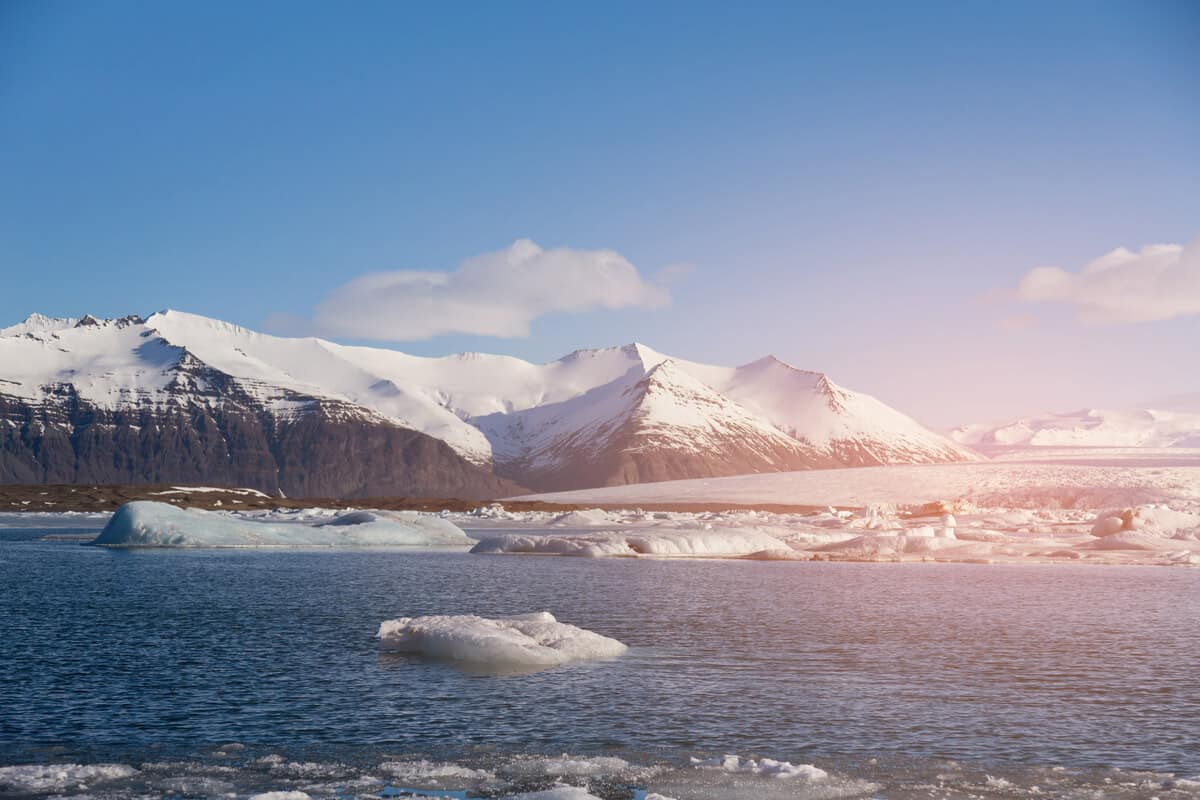March in Iceland is a time of transition, offering a unique blend of winter’s majesty and the first whispers of spring. This period is characterized by longer days, providing ample opportunity to explore the island’s stunning landscapes, partake in thrilling activities, and witness the ethereal beauty of the Northern Lights. This guide delves into what makes March an exceptional time to visit Iceland, covering everything from weather conditions and driving tips to the best activities and sightseeing options.

Weather in March
March in Iceland marks the transition from the harsh Icelandic winter to the milder spring season. However, this transition brings with it a level of unpredictability in the weather, which can significantly impact both daily activities and travel plans. Understanding the nuances of Iceland’s weather and driving conditions in March is crucial for anyone planning a visit during this time.
Temperature range
March sees temperatures that hover around -1°C to 4°C (30°F to 39°F). While these temperatures suggest a cold environment, the actual feel can be much colder due to the wind chill factor, which is a common characteristic of Icelandic weather. The presence of wind can make outdoor conditions feel several degrees colder than they actually are.

Wind and snowstorms
March is known for its strong winds, which can suddenly increase the chill factor and reduce visibility, especially during snowstorms. Snowstorms, while less frequent than in the deep winter months, can still occur and may lead to temporary disruptions in travel and outdoor activities.
Given the cold and windy conditions, visitors are advised to dress in layers. A waterproof and windproof outer layer is essential, as are thermal underlayers. Waterproof boots with good insulation are also recommended to keep feet warm and dry. Accessories like gloves, hats, and scarves are indispensable for staying comfortable while exploring the outdoors.
Driving in March
Road conditions
The roads in March can be challenging, with conditions ranging from clear to icy, and occasionally covered in snowdrifts. These conditions can change rapidly, especially in more rural areas or in the highlands, where roads are more susceptible to the whims of Icelandic weather.
Vehicle recommendations
Renting a four-wheel-drive vehicle is strongly advised for anyone planning to drive in Iceland during March. These vehicles offer better traction and stability on icy roads and in windy conditions. Most rental vehicles are equipped with winter tires, but visitors can also request studded tires for additional grip on icy surfaces.
Driving tips
- Check weather and road conditions daily: The Icelandic Meteorological Office and the Icelandic Road and Coastal Administration provide up-to-date weather and road condition reports. It’s crucial to check these resources regularly, as conditions can change quickly.
- Drive cautiously: Even if you’re experienced with winter driving, Icelandic conditions can be challenging. Drive at reduced speeds, keep a safe distance from the vehicle in front of you, and be prepared for sudden gusts of wind.
- Be prepared for emergencies: Carry emergency supplies, including food, water, warm clothing, and a charged mobile phone. In remote areas, help may be some distance away, so preparation is key.

Daylight hours
One advantage of visiting Iceland in March is the increasing daylight hours. This not only allows for longer sightseeing days but also makes driving safer. However, it’s still important to be cautious during dawn and dusk, when visibility can be lower.
Activities and sightseeing
March offers a plethora of activities, from exploring ice caves and hunting for the Northern Lights to snorkeling in Silfra fissure and embarking on glacier tours. The longer days allow for more time to enjoy these experiences, making it a perfect time for adventure seekers.
- Ice Caves and Northern Lights: The electric blue ice caves in the Vatnajokull glacier are a must-see, with tours available from Reykjavik. March is also an ideal time to witness the Northern Lights, thanks to the dark, clear skies. Various tours are available, including minibus tours, super jeep tours with a photographer guide, and boat cruises from Reykjavik harbor.
- Snorkeling and diving: The Silfra fissure offers unparalleled visibility and a unique underwater experience, even in the cold temperatures of March. Requirements for snorkeling and diving vary, but all tours are led by experienced divemasters to ensure safety and comfort.
- Glacier tours: Glacier hikes are popular in March, with tours to Solheimajokull glacier and snowmobiling on Langjokull glacier being among the highlights. These activities offer a chance to experience Iceland’s stunning glacial landscapes up close.
- Caving and horseback riding: Exploring lava tunnels and caves is an excellent option in March, with tours available to the family-friendly Vidgelmir lava cave and Raufarholshellir lava tunnel. Horseback riding on Icelandic horses offers an authentic experience, with tours available across the country’s diverse landscapes.
Sightseeing in March
Driving the Ring Road in March is generally feasible, offering access to many of Iceland’s most famous sites, including waterfalls, glaciers, and coastal features. The Golden Circle route is also accessible, featuring Thingvellir National Park, Geysir Geothermal Area, and Gullfoss Waterfall. The Snaefellsnes Peninsula, known as “Iceland in Miniature,” is another must-visit, offering a wide range of landscapes and attractions.
Festivals and traditions
March is a lively month in Reykjavik, with several festivals and traditions taking place, including the Battle of the Bands Festival and Mustache March. These events offer a glimpse into Icelandic culture and provide a unique experience for visitors.
Frequently Asked Questions about Iceland in March
Is March a good time for Iceland?
Absolutely! March offers the chance to enjoy winter activities with the added benefit of longer days and slightly milder weather. It’s also less crowded, making it a great time to explore.
Can you see northern lights in March in Iceland?
Yes, March is one of the best times to see the Northern Lights in Iceland, thanks to the dark and often clear nights.
What should I wear in Iceland in March?
Warm winter clothing is essential, including thermal underwear, windproof outerwear, a hat, and gloves. Waterproof boots with good traction are also recommended.
How light is it in Iceland in March?
Daylight increases significantly throughout March, from about 10 hours of daylight at the beginning of the month to over 13 hours by the end.
Exploring Iceland in March is an adventure that offers the best of both winter and spring. With careful planning and the right gear, visitors can enjoy a wide range of activities and experiences, from the awe-inspiring Northern Lights to the breathtaking landscapes that make Iceland a unique destination.



